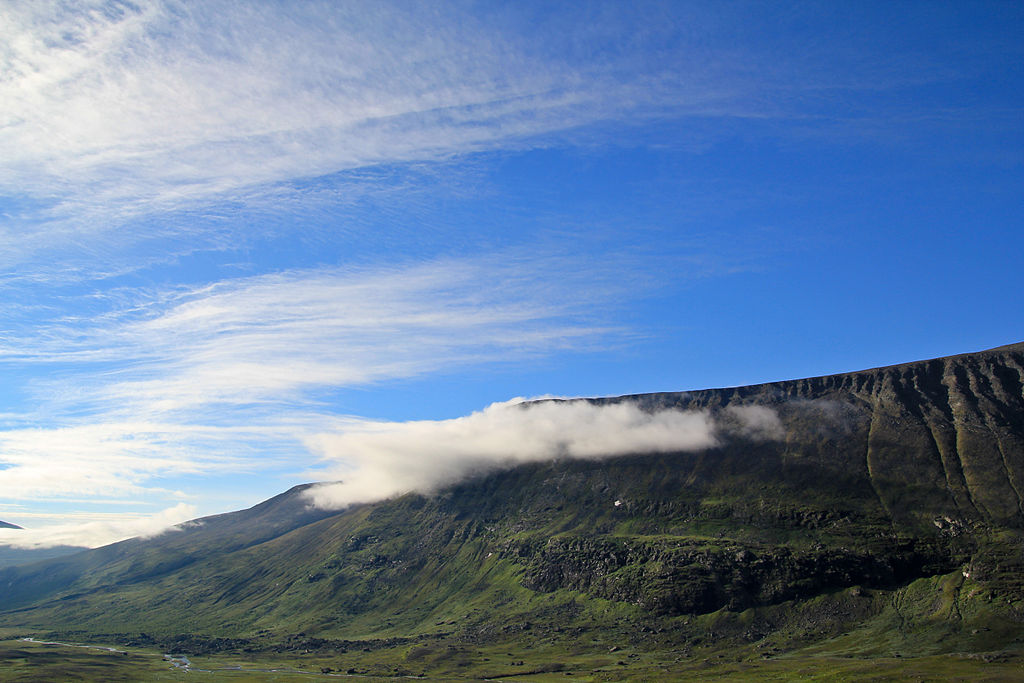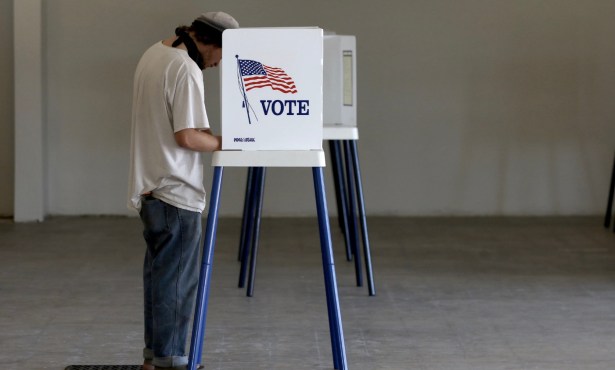Trump, Climate Change, and the California Fires
How Trickle-Down Policies Affect the New Abnormal

Consider this: The tallest mountain peak in Sweden — the south peak of Mount Kebnekaise — just dropped by 14 feet in the month of July alone. It’s now no longer Sweden’s highest peak. This summer’s been a scorcher for Sweden. I hear more than 50 forest fires have raged across the country.
It’s been a scorcher for us as well. Seven of the worst wildfires in California history have occurred in the last 10 months. A succession of rolling heat waves has left us along the Central Coast pummeled and withered. Nerves are frayed; patience is stretched; tempers, as they say, have a tendency to flare.
Who can forget our freaky July 6 Holiday Fire, with its cyclonic up-drafting winds, when even at 10 at night, the mercury hovered above 100? It was just last September that Santa Barbarians found themselves dodging hail stones shot from an equally freaky “microburst” that left every other tree in the Funk Zone decapitated.
When the Thomas Fire exploded last December, it quickly established itself as the largest wildfire in California history. That record would stand barely eight months, less time than many victims have needed to recover. Thomas was surpassed this week by the Mendocino Complex Fire. Some Santa Barbara boosters are objecting the Mendocino conflagration is, in fact, really a compound of two megafires. Perhaps an asterisk, they argue, is in order.
Perhaps maybe an exclamation point.
In this context, Donald Trump famously lashed out via tweet against “bad environmental laws,” blaming them for causing California’s prolonged agonies of fire and drought. Such laws “aren’t allowing massive amount of readily available water to be properly utilized,” Trump twote, because it was “being diverted into the Pacific Ocean.” Likewise, Trump twitted, “Must also tree clear to stop fire spreading!”
If the President often sounds like Homer Simpson after suffering a debilitating stroke, in this case, the gaping disconnect between Trump’s baleful ignorance about what’s causing mass terror throughout the American West could not be more stark. I’m hoping it wakes up those who have so far avoided weighing in about climate change and the new abnormal — firefighters and weather forecasters, to name just two. The speed and vehemence with which Cal Fire commanders have repudiated Trump’s remarks have been both striking and heartening. Lack of water, they made clear, has never been an issue. Climate change, they said, increasingly is.
Hopefully it’s just a start. Maybe they will weigh in on Trump’s proposal to freeze fuel- efficiency standards for the nation’s fleet of automobiles and light trucks. As a practical matter, we’re talking the difference between 30 miles a gallon versus 36. In California, that’s the equivalent of adding 2.8 million cars to the road. And this proposal will double atmospheric carbon dioxide counts by the end of the century to levels not seen since 56 million years ago. At that time, there were no glaciers on planet Earth. No people either.
Naturally, California is in the crosshairs of Trump’s fuel-inefficiency fatwah. That’s because California has always led the nation in devising new auto-pollution controls. Since the days of Ronald Reagan, California has been allowed to set fuel-efficiency and clean-air standards that exceed the federal government’s. Trump wants to jam that genie back in the bottle. That’s not going to happen. The bottle would break first.
Trump’s payoff? For car buyers, nominally cheaper and more fuel-inefficient cars. For the oil companies, the equivalent of half a million more barrels of oil a day will get sold at the pump. This, we are told, will result in safer cars and fewer deaths. It should be noted that the safety engineer on whose work the White House relied in making this claim has repudiated that conclusion. Since the 1970s, traffic deaths have steadily declined even as new fuel efficiencies and emission controls were imposed on an industry that steadfastly resisted every safety innovation, including the seat belt.
Naturally, Trump got it wrong about water being diverted to the ocean; he’s from the East Coast, where it rains all day. He wouldn’t know that the only water diversion taking place is diversion that prevents water from following its natural path. As for increased logging to prevent forest fires, that too is a combustible point. It’s worth noting that commercial logging is now being proposed in Los Padres National Forest — for the first time ever in my lifetime — on 2,800 acres near Mt. Pinos.
It’s being sold as a fire-prevention initiative. The funds raised from the sale of 400,000 linear board feet of pine would help offset the astronomical costs of firefighting in the forest, which now consumes 72 percent of the Los Padres budget. That’s up from 15 percent in 1996. Maybe this makes sense. Maybe it doesn’t. Critics contend the logging development will imperil a dozen condor roosts and insist that fire protection can be better achieved by fireproofing the properties to be saved than by clearcutting the forest. The government claims there’s no dearth of roosting perches and that logging will have no impact on recovery efforts.
Both sides have compelling arguments. What makes me nervous is the number of questions left unresolved and the stealthy manner in which this proposal was rolled out. The Forest Service sought and got a “categorical exemption” to the typical environmental review process. That means there were just 30 days allowed for the public to respond and comment on a significant shift in policy and practice. If this is just the first commercial logging effort of more to follow, that’s especially troubling. Still, 600 comments got submitted, most in opposition.
Until this week, I’d never known Mount Kebnekaise existed. Now I can’t forget it.



